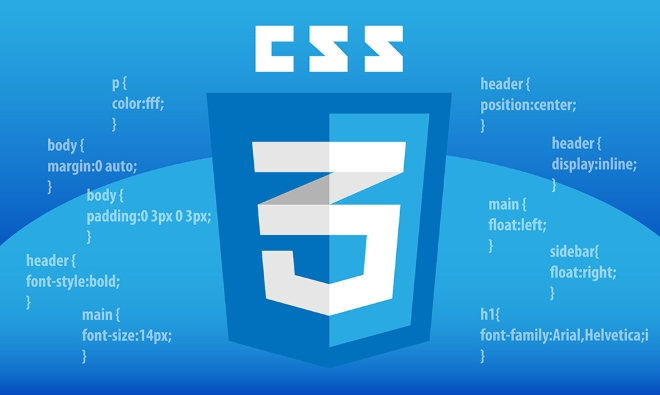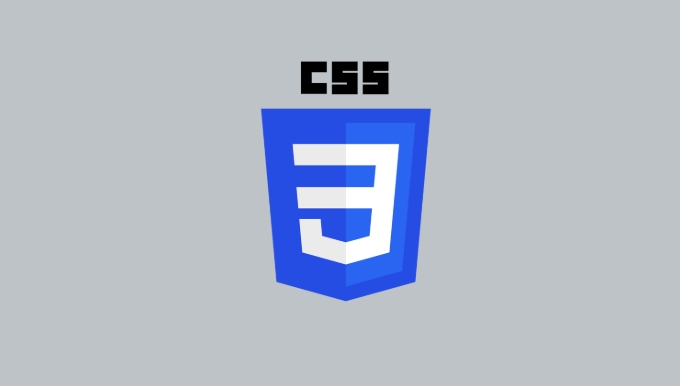The key to improving user experience in CSS animation is to choose transition and @keyframes reasonably. 1. Transition is suitable for simple state changes, such as button hover effect, which is achieved by defining attributes, duration, delay and speed curves; 2. @keyframes is suitable for complex animation sequences, such as loading animations, controlling the state of elements at different time points through multiple keyframes. Usage tips include: prioritizing the use of transform and opacity to improve performance, ensuring the initial consistency is consistent with the target state, and setting the ease function reasonably. Frequently asked questions: enable hardware acceleration in a timely manner and reduce nesting, check the property name and initial value when the transition is not effective, and repeat animation playback can be controlled through infinite parameters or JavaScript. Mastering these foundations can achieve rich interaction effects.

CSS animation is one of the important means to improve user experience in web design. Using transitions and @keyframes , we can create smooth, natural visuals. The following will introduce several key points from the perspective of practical application.

How to choose transition and @keyframes
transition is suitable for simple state changes , such as changes in color or size when a button is hovered. It controls animation by defining attributes, duration, delay, and speed curves. For example:

button {
transition: background-color 0.3s ease, transform 0.2s linear;
} @keyframes is more suitable for complex animation sequences , such as loading animations, icon deformation, etc. You can control the state of an element at different points in time by defining multiple keyframes:
@keyframes spin {
0% { transform: rotate(0deg); }
100% { transform: rotate(360deg); }
}- If only transitions between two states are needed, priority is given to
transition - Multiple intermediate states or loop animations, it is more suitable to use
@keyframes
Usage tips: Make animation more natural
Avoid changing multiple complex properties at the same time . For example, transitioning width , height and transform at the same time may cause performance problems. It is recommended to use transform and opacity as much as possible, as they are more GPU-friendly.

Pay attention to the consistency between the initial state and the end state . If you want an element to start animation after the page is loaded, make sure that its initial state (such as opacity: 0 ) and target state (such as opacity: 1 ) can trigger the transition correctly.
Set the ease function reasonably . The default ease is already good, but sometimes you may need a more "bounce" effect, you can try custom curves like cubic-bezier(.175, .885, .32, 1.275) .
Frequently Asked Questions and Solutions
Animation stuttering?
- Check if too many multi-paint/reflow properties are used (such as
width,top) - Try setting the animation element
will-change: transformortranslateZ(0)to enable hardware acceleration - Reduce animation hierarchy nesting to avoid multiple animations from affecting each other
The transition does not take effect?
- Make sure that the correct
transitionattribute name is set (such asbackground-colorinstead ofbackground) - The initial value cannot be
auto, for exampleheight: autocannot transition - Is the method of triggering state changes correct (such as
:hover,classswitch)
Is the problem of repeating animation playback?
- Use
animation: spin 1s infinite linear;to make animations loop infinitely - If you want to play again every click, you can remove it through JavaScript and add the class name to achieve it
Basically these common situations. After mastering the basics, you can combine transition and @keyframes according to specific needs to create richer interactive effects.
The above is the detailed content of Animating elements with css transitions and keyframes. For more information, please follow other related articles on the PHP Chinese website!

Hot AI Tools

Undress AI Tool
Undress images for free

Undresser.AI Undress
AI-powered app for creating realistic nude photos

AI Clothes Remover
Online AI tool for removing clothes from photos.

Clothoff.io
AI clothes remover

Video Face Swap
Swap faces in any video effortlessly with our completely free AI face swap tool!

Hot Article

Hot Tools

Notepad++7.3.1
Easy-to-use and free code editor

SublimeText3 Chinese version
Chinese version, very easy to use

Zend Studio 13.0.1
Powerful PHP integrated development environment

Dreamweaver CS6
Visual web development tools

SublimeText3 Mac version
God-level code editing software (SublimeText3)

Hot Topics
 CSS tutorial for creating loading spinners and animations
Jul 07, 2025 am 12:07 AM
CSS tutorial for creating loading spinners and animations
Jul 07, 2025 am 12:07 AM
There are three ways to create a CSS loading rotator: 1. Use the basic rotator of borders to achieve simple animation through HTML and CSS; 2. Use a custom rotator of multiple points to achieve the jump effect through different delay times; 3. Add a rotator in the button and switch classes through JavaScript to display the loading status. Each approach emphasizes the importance of design details such as color, size, accessibility and performance optimization to enhance the user experience.
 Addressing CSS Browser Compatibility issues and prefixes
Jul 07, 2025 am 01:44 AM
Addressing CSS Browser Compatibility issues and prefixes
Jul 07, 2025 am 01:44 AM
To deal with CSS browser compatibility and prefix issues, you need to understand the differences in browser support and use vendor prefixes reasonably. 1. Understand common problems such as Flexbox and Grid support, position:sticky invalid, and animation performance is different; 2. Check CanIuse confirmation feature support status; 3. Correctly use -webkit-, -moz-, -ms-, -o- and other manufacturer prefixes; 4. It is recommended to use Autoprefixer to automatically add prefixes; 5. Install PostCSS and configure browserslist to specify the target browser; 6. Automatically handle compatibility during construction; 7. Modernizr detection features can be used for old projects; 8. No need to pursue consistency of all browsers,
 Styling visited links differently with CSS
Jul 11, 2025 am 03:26 AM
Styling visited links differently with CSS
Jul 11, 2025 am 03:26 AM
Setting the style of links you have visited can improve the user experience, especially in content-intensive websites to help users navigate better. 1. Use CSS's: visited pseudo-class to define the style of the visited link, such as color changes; 2. Note that the browser only allows modification of some attributes due to privacy restrictions; 3. The color selection should be coordinated with the overall style to avoid abruptness; 4. The mobile terminal may not display this effect, and it is recommended to combine it with other visual prompts such as icon auxiliary logos.
 Creating custom shapes with css clip-path
Jul 09, 2025 am 01:29 AM
Creating custom shapes with css clip-path
Jul 09, 2025 am 01:29 AM
Use the clip-path attribute of CSS to crop elements into custom shapes, such as triangles, circular notches, polygons, etc., without relying on pictures or SVGs. Its advantages include: 1. Supports a variety of basic shapes such as circle, ellipse, polygon, etc.; 2. Responsive adjustment and adaptable to mobile terminals; 3. Easy to animation, and can be combined with hover or JavaScript to achieve dynamic effects; 4. It does not affect the layout flow, and only crops the display area. Common usages are such as circular clip-path:circle (50pxatcenter) and triangle clip-path:polygon (50%0%, 100 0%, 0 0%). Notice
 What is the difference between display: inline, display: block, and display: inline-block?
Jul 11, 2025 am 03:25 AM
What is the difference between display: inline, display: block, and display: inline-block?
Jul 11, 2025 am 03:25 AM
Themaindifferencesbetweendisplay:inline,block,andinline-blockinHTML/CSSarelayoutbehavior,spaceusage,andstylingcontrol.1.Inlineelementsflowwithtext,don’tstartonnewlines,ignorewidth/height,andonlyapplyhorizontalpadding/margins—idealforinlinetextstyling
 What is the CSS Painting API?
Jul 04, 2025 am 02:16 AM
What is the CSS Painting API?
Jul 04, 2025 am 02:16 AM
TheCSSPaintingAPIenablesdynamicimagegenerationinCSSusingJavaScript.1.DeveloperscreateaPaintWorkletclasswithapaint()method.2.TheyregisteritviaregisterPaint().3.ThecustompaintfunctionisthenusedinCSSpropertieslikebackground-image.Thisallowsfordynamicvis
 How to create responsive images using CSS?
Jul 15, 2025 am 01:10 AM
How to create responsive images using CSS?
Jul 15, 2025 am 01:10 AM
To create responsive images using CSS, it can be mainly achieved through the following methods: 1. Use max-width:100% and height:auto to allow the image to adapt to the container width while maintaining the proportion; 2. Use HTML's srcset and sizes attributes to intelligently load the image sources adapted to different screens; 3. Use object-fit and object-position to control image cropping and focus display. Together, these methods ensure that the images are presented clearly and beautifully on different devices.
 What is CSS and what does it stand for?
Jul 03, 2025 am 01:48 AM
What is CSS and what does it stand for?
Jul 03, 2025 am 01:48 AM
CSS,orCascadingStyleSheets,isthepartofwebdevelopmentthatcontrolsawebpage’svisualappearance,includingcolors,fonts,spacing,andlayout.Theterm“cascading”referstohowstylesareprioritized;forexample,inlinestylesoverrideexternalstyles,andspecificselectorslik






